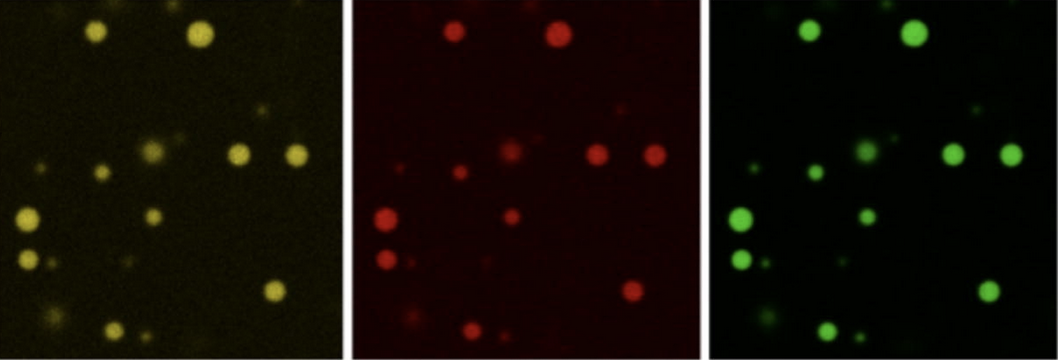MBL Council Explores the Blossoming Field of Condensates

“Condensates are everywhere!” proclaimed one of Clifford Brangwynne’s slides, during his introduction to the April 3 MBL Council Meeting at the Museum of Science, Boston.
Indeed, scientists are realizing how very important condensates are in dozens of contexts -- from plant biology to human disease to bioengineering – while an ever-widening network of researchers at MBL continues to pioneer the field of condensate biology.
“Condensate-based therapeutics are moving into the clinic, and at least six biotech companies have formed in the condensate space,” said Brangwynne, professor and director of the Omenn-Darling Bioengineering Institute at Princeton University.
The MBL Council event, titled “MBL Discoveries with Impact: Condensates in Cell Biology and Neuroscience,” traced MBL’s central, founding role in the field, and showcased the current research in condensate biology conducted by our MBL resident Senior Scientists, Josh Rosenthal and Jen Morgan.
The study of condensates was launched in the 2008 MBL Physiology course, after Brangwynne, Tony Hyman and students were the first to recognize condensates forming in the embryos of nematode worms (Brangwynne, et al., Science, 2009).
Thanks to much follow-up work, with critical studies at MBL, condensates (liquid droplets that form inside cells, gathering select molecules inside the membrane-free drop) are now recognized as a common way for cells to organize the traffic jam of molecules zipping around their interior.
“I believe the central question in biology is how – from the chaos of molecules in the cell – you get emergent structures, such as embryonic development,” said Brangwynne. Condensates point to a solution to that question.
The featured short talks by our two MBL scientists brought the questions and impacts of condensate biology to life. Senior Scientist Joshua Rosenthal works in the field of RNA-based therapeutics – now a multibillion-dollar industry worldwide, led by Moderna and Pfizer. Rosenthal studies RNA editing in the squid nervous system, which squid do prolifically well, compared to humans. “We think condensates of editing enzymes are driving the high level of editing found in squid neurons,” Rosenthal said. He has co-founded a biotech company to apply this basic science to humans as a potential therapy for a range of problems, such as COPD and chronic pain management.
MBL Senior Scientist Jennifer Morgan described her collaborative work with Whitman Fellow Dragomir Milovanovic, investigating how condensates organize synapses—the communication points between neurons where neurotransmitters are released. Their dynamic collaboration, which brings together a large group at the MBL, aims to inform our understanding of neurological diseases such as Parkinson’s and Lewy body dementia. Read more about their collaboration here.

After the two talks, MBL Director Nipam Patel and Director of Research Anne Sylvester moderated a Q&A with the audience and the panel. Sylvester posed a thoughtful question: Why is the study of condensates uniquely suited to the MBL?
The responses emphasized that the discovery of condensates during the Physiology course launched the MBL as a central hub for leaders in this emerging field. (Brangwynne and Amy Gladfelter of Duke University, also a leading-edge condensate researcher, now co-direct the Physiology course). Each year, the MBL continues to bring together pioneering scientists working on condensate biology, including Michael Rosen, who also participated in the formative HHMI-MBL Summer Institute (2013-2017) that was crucial in defining the nascent field. The success of this research is deeply rooted in the MBL’s collaborative environment, particularly its partnerships with Whitman Fellows and other visiting scientists. The work also relies on unique resources available at the MBL—especially its access to marine organisms and advanced imaging technologies developed through MBL’s Imaging Innovation Lab.
“It’s the concentration of people, the fresh ideas coming into contact, and the culture of collaboration at the MBL – that’s the magic,” Morgan said.